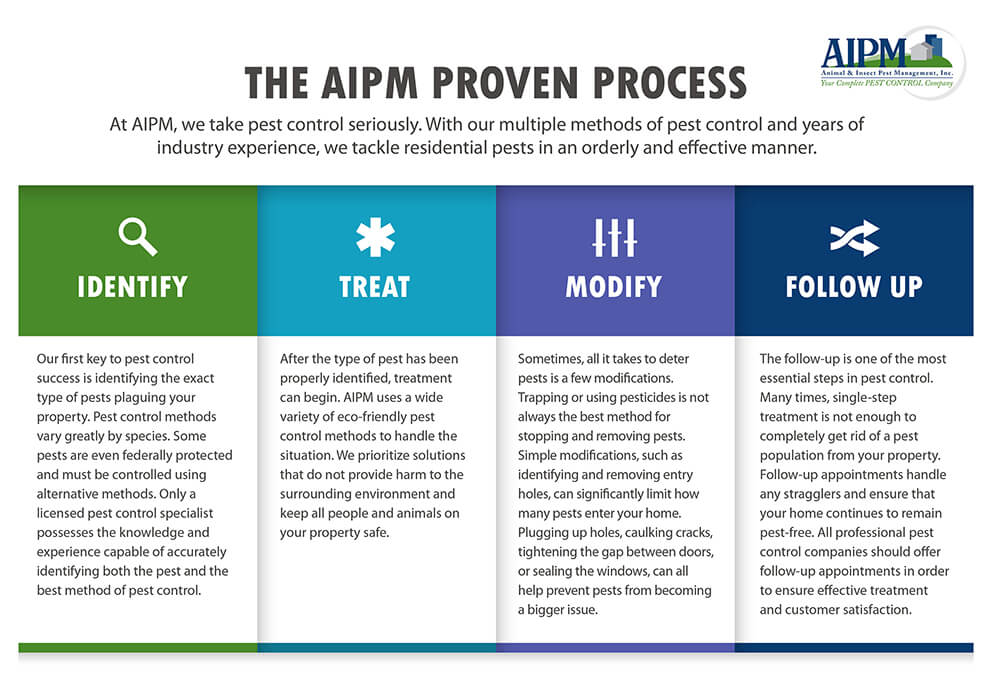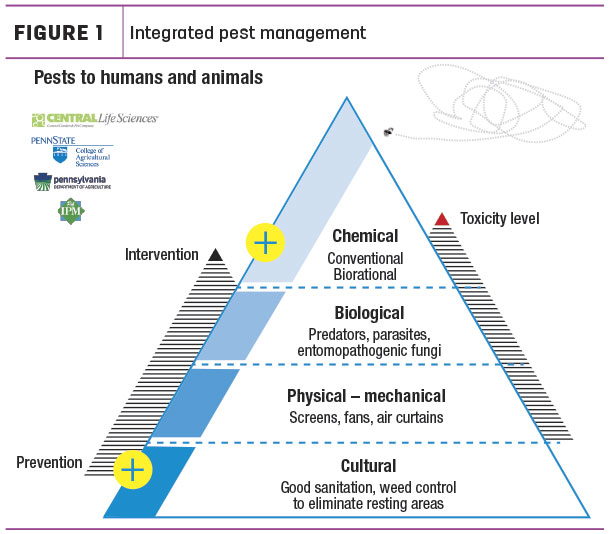The Basic Principles Of Pestwise
The Basic Principles Of Pestwise
Blog Article
9 Easy Facts About Pestwise Explained
Table of ContentsThe Ultimate Guide To PestwisePestwise - An OverviewHow Pestwise can Save You Time, Stress, and Money.Excitement About PestwiseFascination About PestwisePestwise for BeginnersThe Greatest Guide To Pestwise

Q. Specify "incorporated bug management" (IPM) and listing a number of possible control strategies that may be used in an IPM method. A. Integrated pest monitoring is the integrating of proper pest control techniques right into a solitary strategy to lower bugs and their damage to an appropriate level. Parasite control strategies might consist of: host resistance, biological control, social control, mechanical control, sanitation, and chemical (pesticide) control.
Some Known Incorrect Statements About Pestwise
What can you do to keep the bugs you are trying to manage from becoming resistant to the chemicals you use? A. Bug resistance can be minimized by utilizing integrated insect management and revolving the kinds of chemicals used.
Pests are an important risk to the farming organization, and integrated pest administration aids growers address and reduce these dangers. Integrated insect administration makes use of several methods in facility, hence being a much more effective remedy to the concern. Commercial Pest Control. In particular, eliminating hostile chemical methods enables reducing damage to individuals and the environment by utilizing natural and more secure alternatives rather
A Biased View of Pestwise
The goal of integrated bug administration is to minimize this injury and control appropriate problem levels instead than get rid of all undesirable populations. This is why it is important to understand what steps are justified in each instance and usage hostile ones just when various other integrated administration methods do not function. Integrated monitoring minimizes the unfavorable consequences of a non-IPM technique, and the main advantages of IPM Benefits of IPM.
A proper understanding of the problem extent identifies if the problem needs to be attended to. are the next elements of an IPM program since it is essential to understand if the microorganisms make possible threats and choose on the incorporated monitoring options or the specific chemical use. intend to lower infestations by using various agronomic strategies.
Some Known Incorrect Statements About Pestwise
Integrated monitoring choices in an IPM program beginning with much safer to a lot more hostile ones. The prior incorporated management aspects aid comprehend how More about the author to intend and apply an IPM program step by step: Display your plants on a regular basis.

Amongst others, IPM cultural approaches consist of the complying with field monitoring methods: soil therapy; selection of appropriate plants; crop rotation; interplanting or strip cropping; selection of planting dates; weed control; use of trap plants. Desirable dirt conditions speed up plant growth, and strenuous crops are extra immune to invasions. Healthy and balanced seed startings and seeds predetermine successful crop growth, so it is essential to pick pest-free planting material with strong origins.
Therefore, among various other applications, plant turning can be efficiently utilized as an integrated bug management approach. Vermin spread out slower if rows of different crop types separate their host plants in intercropping or strip chopping, which is additionally used in the incorporated bug administration system. Alternatively, invasions enhance when plants of the same crop type or family members expand with each other.
, as well as tomatoes. Growing trap plants in spots is one more choice for IPM intercropping. This integrated parasite monitoring approach suggests drawing in bugs to specific plants and after that controlling them with chemical or mechanical methods.
All about Pestwise
Obstacles are common instances of physical IPM approaches. Let's take a better look at them. Removing or picking pests out manually is a time and labor-consuming alternative that is extensively used in integrated monitoring and chemical-free farming. Mature pests or their eggs and larvae are gathered by hand and damaged.

Division of Plant Sciences. This integrated management technique suggests a typical means of destroying pests by predators, parasitoids, virus, and other organic control representatives (also known as hostile microorganisms). The function of organic control in IPM is to.
The smart Trick of Pestwise That Nobody is Discussing
With time, their population turned out to be an actual annoyance to farmers along with aboriginal kangaroos or dingoes. The walking cane toad is an additional case showing incorporated organic control failure hereof when it declined to hunt the target types and ended up being a bug itself. Parasitoids develop on or within their hosts to ultimately eliminate them after growing.
Report this page